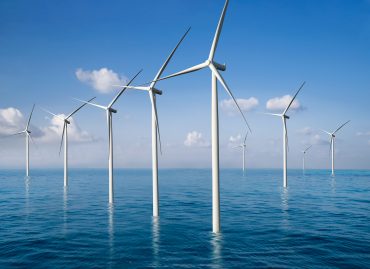

UK renewable energy investment plan targets manufacturing revival with £30 billion annual funding and reduced electricity costs
Key Takeaways
- £30 billion annual renewable investment target outlined in UK’s new industrial strategy, with additional £700 million for energy supply chains and £1 billion for Great British Energy Supply Chain fund.
- 25% electricity cost reduction promised for over 7,000 energy-intensive businesses from 2027 through new British Industrial Competitiveness Scheme, exempting them from environmental levies.
- OEUK calls for balanced energy approach as UK currently imports nearly 40% of energy needs and projects requiring 13-15 billion barrels of oil and gas by 2050.
Introduction
The UK government launches an ambitious industrial strategy that positions the country’s diverse energy mix as the cornerstone for reversing decades of deindustrialization. The ten-year blueprint targets £30 billion in annual renewable investments while acknowledging the continued role of traditional energy sectors.
Offshore Energies UK welcomes the strategy but warns against overlooking oil and gas sectors that currently provide three-quarters of the nation’s energy. The comprehensive plan addresses chronic issues including high power costs and grid delays that have constrained UK manufacturing competitiveness.
Key Developments
The industrial strategy establishes eight priority sectors for accelerated growth, with Clean Energy Industries receiving prominent focus. The government commits £700 million to energy supply chains, bringing the total Great British Energy Supply Chain fund to £1 billion.
A new British Industrial Competitiveness Scheme promises to cut electricity costs by up to 25% for energy-intensive businesses starting in 2027. This initiative aims to align UK electricity prices with European competitors and support over 7,000 manufacturing companies.
The strategy introduces Regional Energy Strategic Boards and a “connections accelerator service” to streamline grid access for high-impact projects. These measures target the infrastructure bottlenecks that have delayed energy project deployments across the country.
Market Impact
Energy-intensive sectors respond positively to the proposed electricity cost reductions, which could enhance manufacturing competitiveness significantly. The renewable energy sector anticipates increased investment flows from the £30 billion annual commitment and improved grid connection processes.
Traditional energy companies express cautious optimism while seeking clearer government backing for oil and gas operations. The strategy’s emphasis on domestic energy production addresses concerns about import dependency that currently affects nearly 40% of UK energy consumption.
The government projects the strategy will unlock billions in private capital and support 1.1 million new jobs across tech and energy-intensive sectors. Manufacturing businesses particularly welcome the electricity cost relief as a competitive advantage against international rivals.
Strategic Insights
The strategy represents a fundamental shift from short-term economic fixes toward long-term industrial planning. By acknowledging both renewable and traditional energy sectors, the government attempts to balance immediate energy security with decarbonization objectives.
OEUK’s emphasis on “homegrown energy” reflects broader concerns about supply chain vulnerabilities exposed by recent global disruptions. The organization’s call for inclusive energy policy recognizes that existing infrastructure and expertise remain critical during the energy transition.
The focus on clusters including offshore wind, carbon capture and storage, and green finance signals an integrated approach to industrial development. This clustering strategy leverages existing UK strengths while building new capabilities in emerging technologies.
Expert Opinions and Data
OEUK CEO David Whitehouse emphasizes the need for government support across all energy sectors. “Government is right to recognise the role of secure and affordable energy at the heart of industrial strategy – it must also be clear in its backing for the sectors that currently deliver it, including oil and gas alongside renewables,” he states.
According to Rigzone, Whitehouse projects the UK will need between 13 billion and 15 billion barrels of oil and gas by 2050, with 7.5 billion barrels remaining in UK waters. He advocates for domestic production of at least half the country’s oil and gas demand to ensure supply stability.
Jane Cooper, Deputy Chief Executive of RenewableUK, highlights the strategy’s clean energy focus as offering significant growth potential. She points to wind energy investments and infrastructure development as key drivers for job creation and economic development nationwide.
Prime Minister Keir Starmer describes the industrial strategy as ending the era of short-term economic thinking. Energy Secretary Ed Miliband connects increased clean power investments to the government’s broader Plan for Change initiative.
Conclusion
The UK’s industrial strategy establishes energy diversity as fundamental to economic competitiveness and manufacturing revival. The government’s commitment to substantial renewable investment alongside recognition of traditional energy sectors creates a framework for managing the energy transition while maintaining supply security.
Success depends on swift implementation of electricity cost reductions and grid connection improvements that address immediate business concerns. The strategy’s effectiveness will ultimately be measured by its ability to attract private investment and deliver the promised manufacturing job growth across energy-intensive sectors.








